Must-Know Event-Driven Architectural Patterns
EDA has become a foundational approach
In modern systems, event-driven architecture (EDA) has become a foundational design approach. It decouples components, improves responsiveness, and enables services to react to events asynchronously.
However, building such systems requires more than just passing around messages.
Here are seven essential event-driven architectural patterns every developer and architect should know.
1 - Competing Consumer Pattern
In this pattern, multiple consumers listen to a shared event queue, but only one of them processes each message.
Why is it useful?
It helps you scale out the processing of heavy workloads. Each consumer competes to grab messages from the queue. If the workload spikes, you can add more consumers to handle the load faster.
Real-world example:
Imagine a video-processing service. Every time a user uploads a video, an event is pushed to a queue. Several consumer services (workers) pick up these jobs and process them in parallel—transcoding, thumbnail generation, etc.
Things to watch out for:
Ensure idempotency of consumers (same message might get processed twice).
Avoid race conditions by locking shared resources properly.
2 - Asynchronous Task Execution Pattern
Sometimes tasks can't or shouldn't be executed immediately. The Async Task Execution pattern handles tasks asynchronously and ensures retry logic in case of failure.
How it works:
The producer sends a task as an event to a message queue.
A consumer picks it up and executes the task.
If the task fails (e.g., due to a database error), it can be retried based on a retry policy or moved to a dead-letter queue.
Why is it important?
It decouples request from execution, prevents the application from being blocked, and ensures resilience during temporary outages.
Use case:
Sending emails after user registration or triggering background fraud checks after a financial transaction.
3 - Consume and Project Pattern
This pattern is about creating a read-optimized view from a stream of events.
When events flow through the system, you process them to update projections—also called materialized views. These views are stored in databases specifically tuned for read access.
Why is it useful?
It separates the write model (event stream) from the read model (projection), allowing fast, tailored data access patterns—especially useful in systems using CQRS (Command Query Responsibility Segregation).
Example:
An e-commerce platform stores order-related events (e.g., OrderPlaced, PaymentCompleted, OrderShipped). These are consumed and projected into a read model showing the order status timeline for the end-user dashboard.
4 - Saga Pattern
The Saga pattern helps manage distributed transactions across multiple services in an event-driven way.
Instead of using two-phase commit (2PC) (which is hard to scale), the Saga breaks the transaction into a series of local transactions, coordinated using events.
There are two common Saga approaches:
Choreography: Services listen to events and respond accordingly.
Orchestration: A central service dictates the flow of the saga by emitting commands.
Example:
In an online booking system:
Step 1: Reserve a seat.
Step 2: Deduct payment.
Step 3: Send confirmation.
If payment fails, the seat reservation must be canceled—this is the compensating action.
Things to keep in mind:
Compensating transactions can get complex.
Requires thoughtful error handling.
5 - Event Aggregation Pattern
Sometimes, multiple small events need to be combined into a larger, meaningful event. That’s the purpose of the Event Aggregation pattern.
Why is it useful?
Rather than reacting to every single fine-grained event (which may be noisy or too granular), you can combine them and act on a higher-level event.
Example:
In an IoT system, sensors send temperature data every few seconds. An aggregator service collects these readings and, after 1 hour, emits an “HourlyTemperatureSummary” event instead of forwarding every single reading downstream.
Benefits:
Reduces downstream event traffic.
Improves observability and system insight.
6 - Event Sourcing Pattern
Unlike traditional systems that store only the current state of data, event sourcing stores the entire history of state changes as a sequence of events.
The system’s state is rebuilt by replaying all the events.
Why is it powerful?
Full audit trail of changes.
Easier to implement undo functionality.
Enables temporal queries: what was the state at any given point in time?
Example:
In a bank account system, instead of storing the balance, you store events like Deposited($100), Withdrew($40). The current balance is the result of replaying those events.
Challenges:
Requires a good strategy for snapshotting to improve performance.
Event schema evolution needs to be carefully managed.
7 - Transactional Outbox Pattern
This pattern solves a tricky problem:
How do you ensure that database changes and event publication happen atomically?
The Transactional Outbox pattern provides a solution. Instead of directly publishing the event to a broker like Kafka, you write it to an outbox table in the same database transaction as your data change. A separate process (or CDC tool like Debezium) reads from the outbox and publishes the events.
Why does this matter?
It prevents the “dual write” problem where a database write succeeds, but the event publication fails, leading to inconsistency.
Use case:
Order service updates order status and emits an "OrderConfirmed" event—all within a single, atomic transaction.
So, which event-driven architectural pattern have you used?
Shoutout
Here are some interesting articles that I read this week:
That’s it for today! ☀️
Enjoyed this issue of the newsletter?
Share with your friends and colleagues.


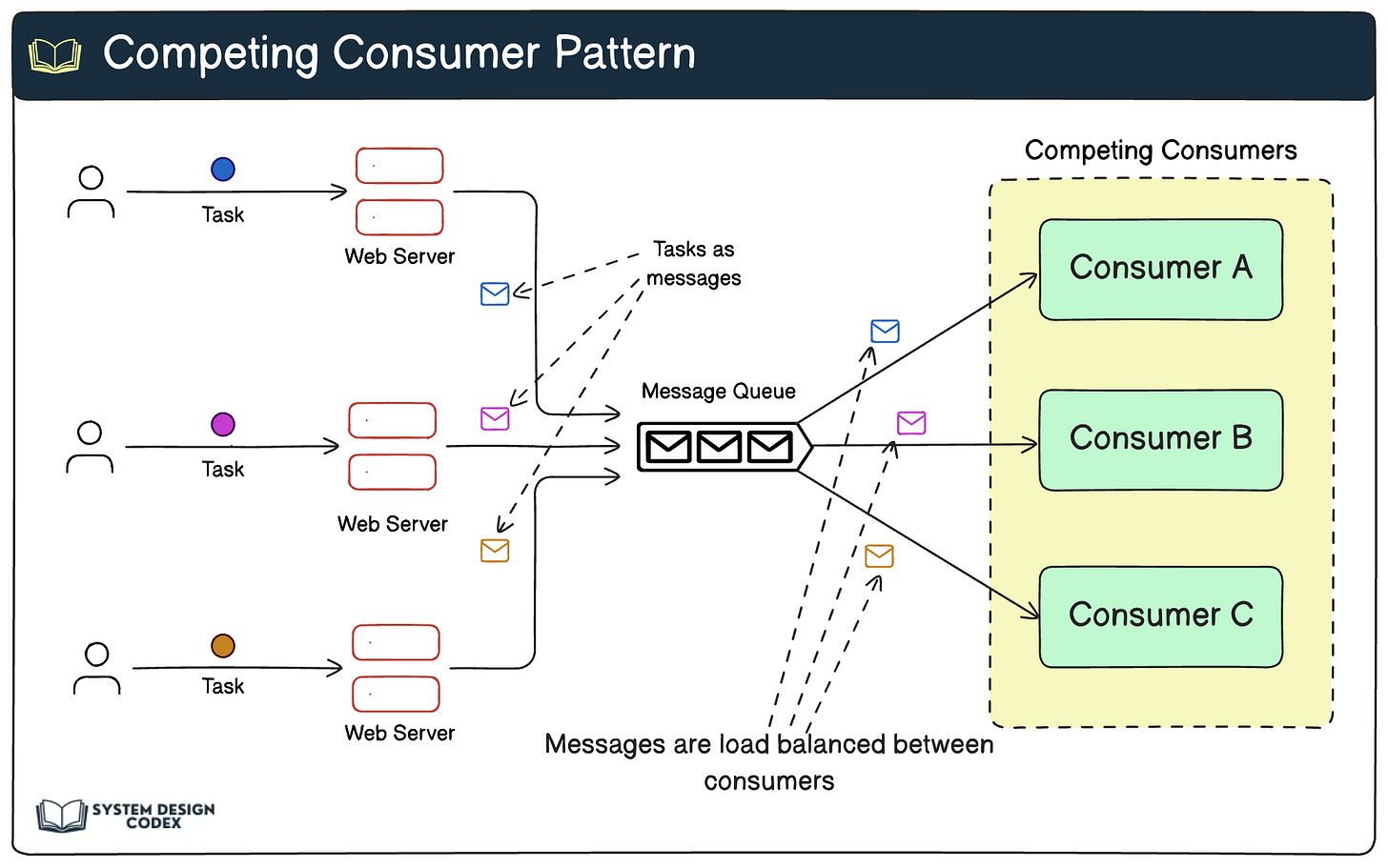
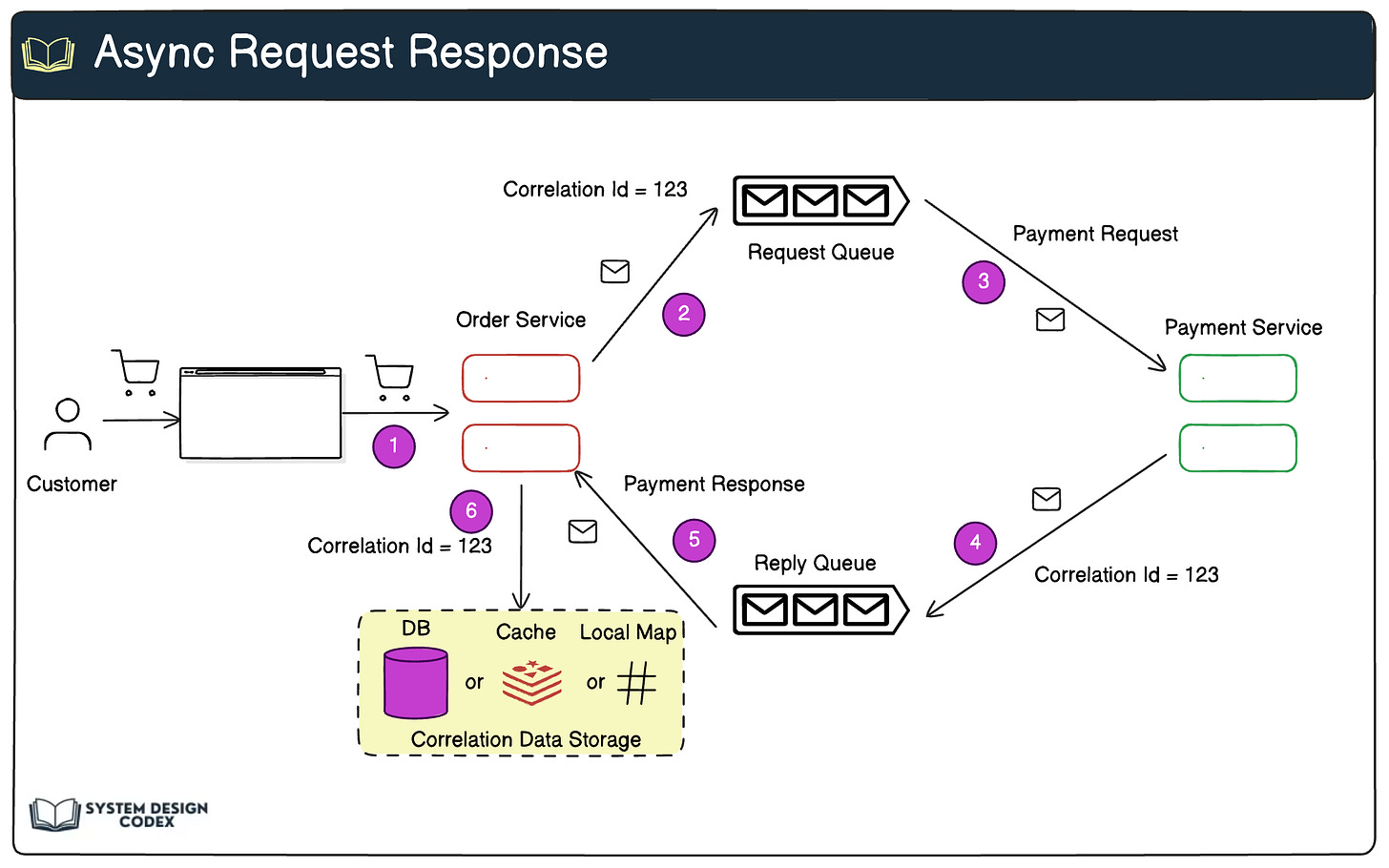
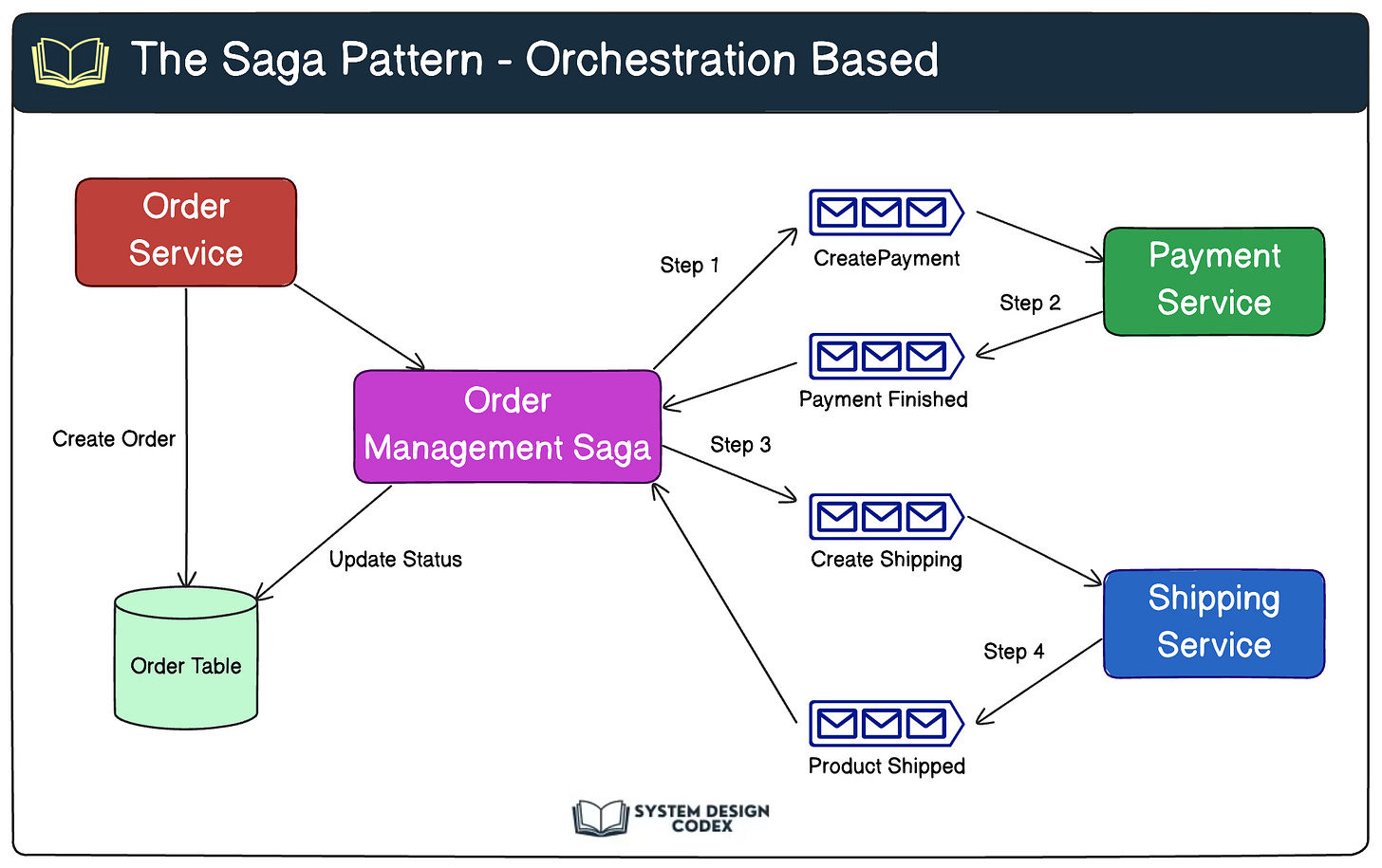
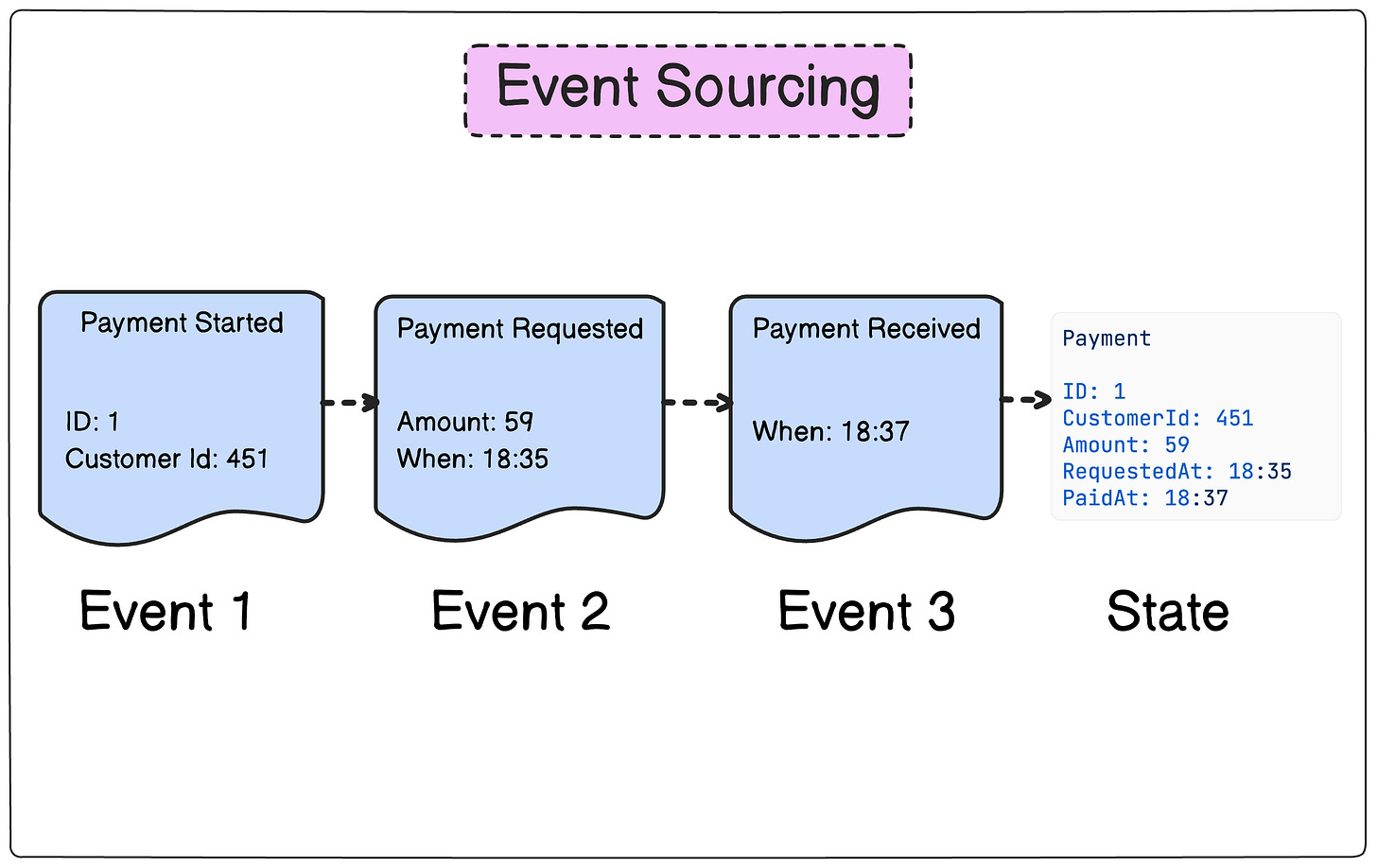
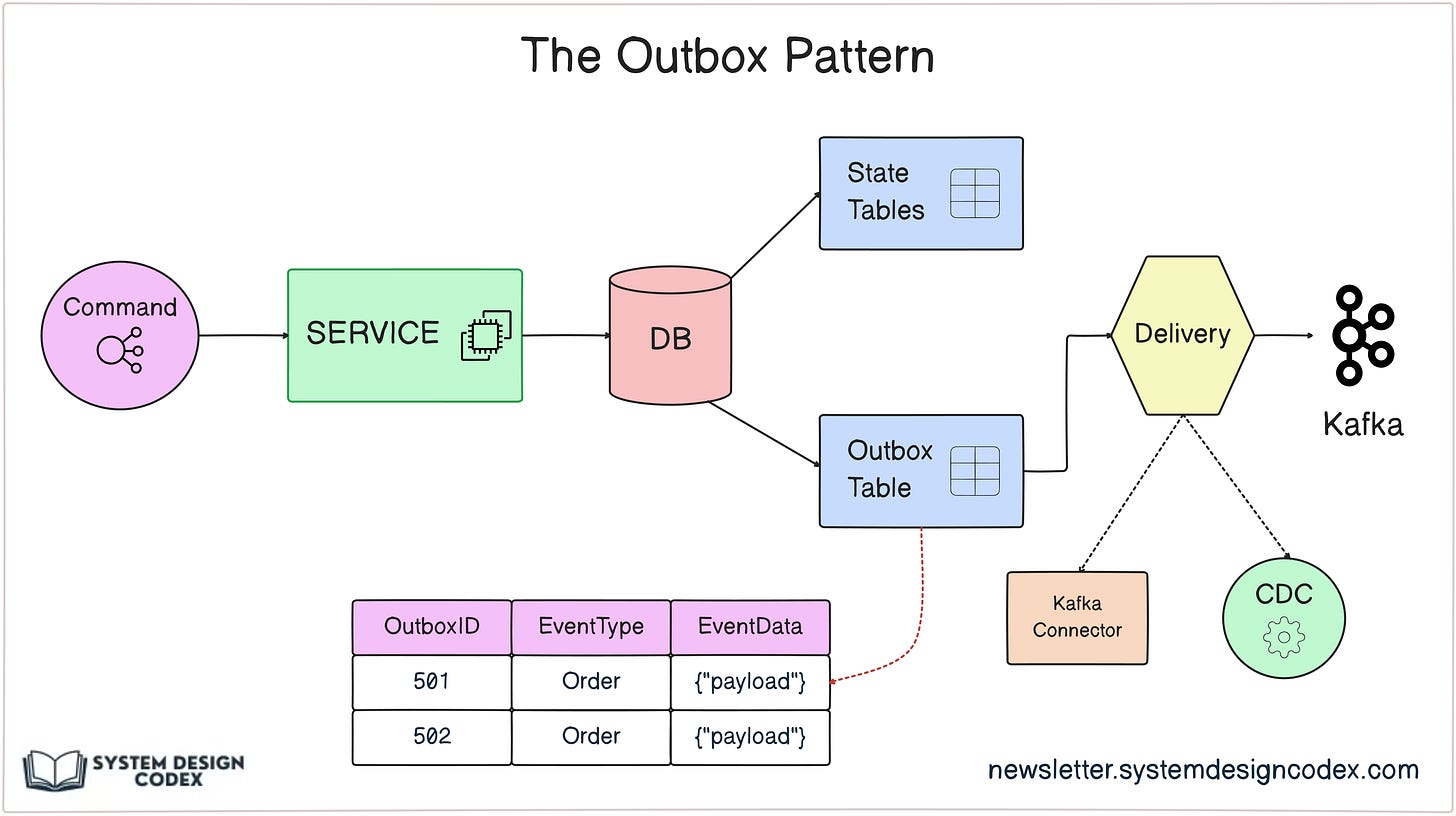
Great breakdown of key EDA patterns, Saurabh.
Would also add that when using event sourcing, it's critical to design for versioning early.
Schema changes in events can get messy fast without a clear migration or compatibility strategy.
Thanks for the shoutout!
Nice read 👍